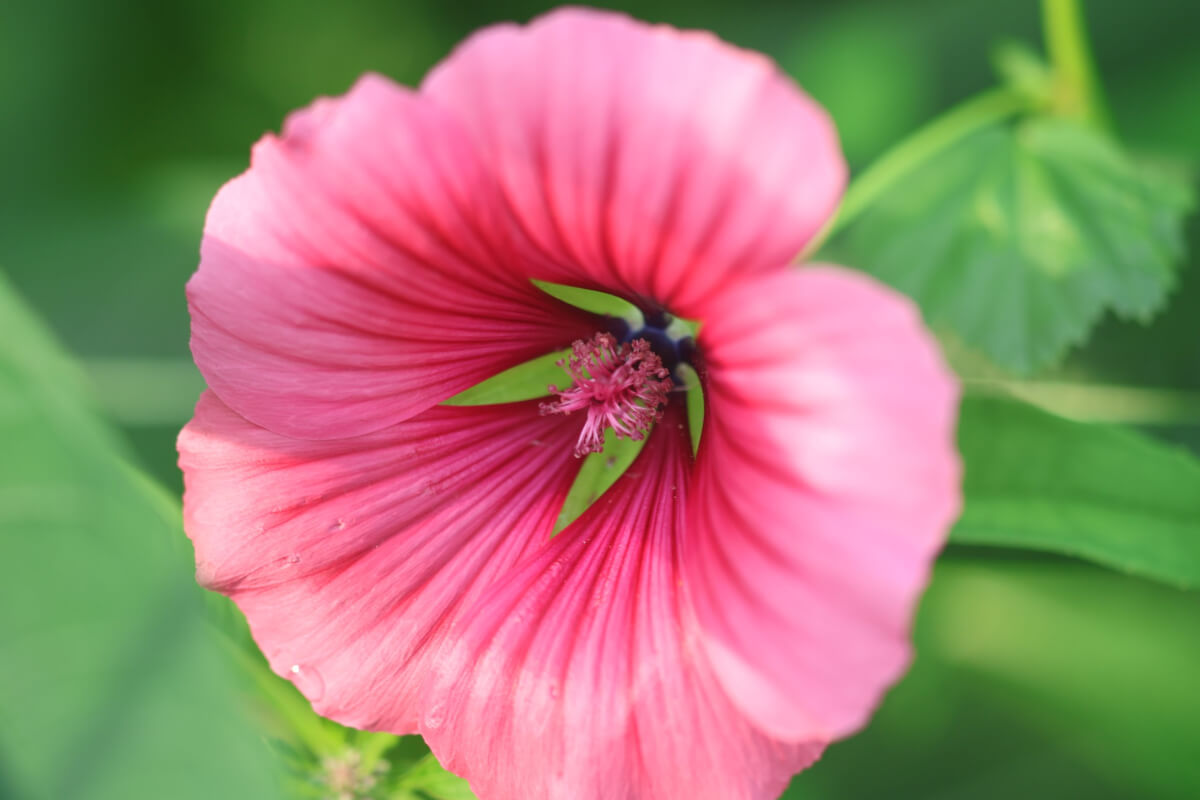It’s another Flower Friday here, and a holiday weekend to boot! We’ve got a special one for you today, an exceptional species of a flower you might not be particularly familiar with.
The Mallow flower isn’t always at the top of most flower grower’s lists. While this flower is natively seen across tropical regions of Africa, Asia and Europe, it’s popularity in the US is not so widespread. Often not seen available commercially, it is usually grown by passionate growers that seek out its specific character in the flower garden.
Part of the Malvaceae family, this is a rather vast family of flowers containing over 240 different genus and well over 4,000 individual species. This particular species is called Malope Trifida, or Malope Vulcan in English. It features a stunning combination of pink, green and a touch of purple, a color combination that is incredibly uncommon to see together in the flower world.
The etymologic impact of mallow is significant with the color “mauve,” coined in 1859, being the French word for the Mallow flower. Mallow is also one of the earliest flowers ever mentioned in written literature, with its first known mention dating back to 300BC. This early age reference was found in a physician’s text, indicating it was among the earliest herbal treatments commonly used and documented.
Mallow features several medicinal properties. The leaves can be chewed and is said to treat sore throats and coughs. Additionally, the leaves can be used to alleviate the painful paresthesia of stinging nettle. In Austrian and Chinese medicine, mallow is turned into both internal and external tea, used for treatment of skin issues, gastrointestinal problems and even respiratory issues.
Some species of Mallow are used in the culinary world as well, most commonly seen in Chinese, Korean, Turkish and Indian cultures. Young Mallow leaves are used as a substitute for lettuce. Older leaves are more commonly cooked, allowing it to be a versatile leafy green. The buds and flowers are also used on salads.
Mallow have seen frequent appearance in our flower gardens, a favorite among all we grow. We have truly loved this species this year, it’s been a marvel to observe throughout the season. We’re glad we have a few more seeds and look forward to growing it again next year!


